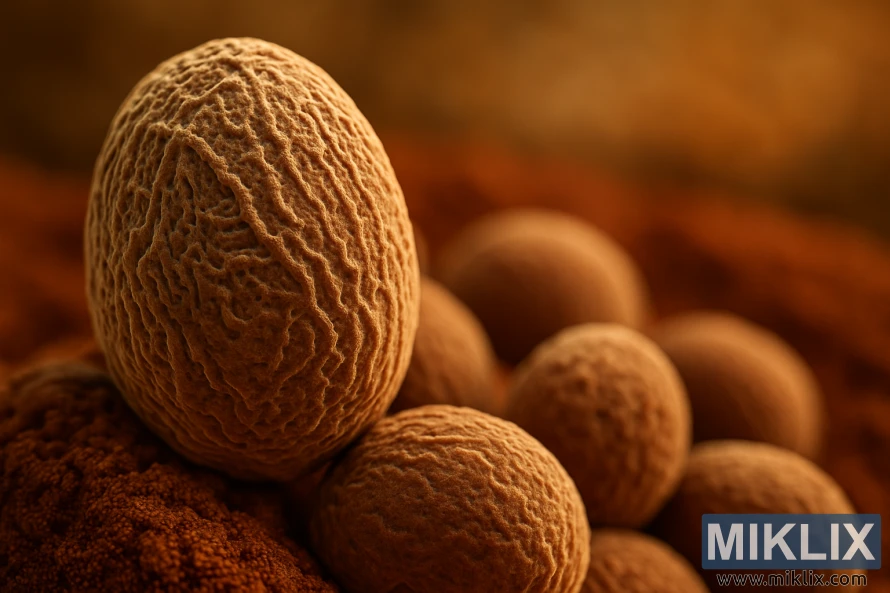Image: Macro View of Belgian Dark Ale Yeast Cells
Published: October 19, 2025 at 8:51:12 PM UTC
A high-resolution macro image captures the intricate textures of Belgian Dark Ale yeast cells, highlighting their role in traditional fermentation and the creation of complex Belgian beers.
The image provides a strikingly detailed, high-resolution macro view of Belgian Dark Ale yeast cells, captured in an almost scientific yet artistic composition. At the center of the frame, dominating the foreground, is a single yeast cell, its surface etched with intricate, maze-like ridges and wrinkles that resemble geological formations or the contours of a weathered landscape. The texture is so vivid and sharply defined that one can almost sense the tactile quality of the cell’s outer wall, which looks simultaneously robust and organic. This level of detail invites both scientific curiosity and an aesthetic appreciation for the hidden complexity of microscopic life.
Surrounding the central yeast cell are several other rounded, textured cells, positioned slightly out of focus as they recede into the middle ground. Their softer definition contrasts with the foreground cell’s crisp clarity, emphasizing the depth of field and creating a layered composition. The ensemble suggests a living colony, a community of yeast cells engaged in the unseen but vital process of fermentation. Together, they reflect the collaborative activity that ultimately transforms simple wort into the complex, flavorful beer styles that Belgium is so famous for.
The background, intentionally blurred with a shallow depth of field, consists of rich, earthy brown and amber hues. This palette mirrors the tones of dark Belgian ales themselves, from deep caramel and molasses to chestnut and mahogany. The warm colors create a seamless harmony between the yeast cells and the environment, reminding the viewer that these microorganisms are both agents of change and integral to the flavor profile of the finished product. The blurred backdrop also provides a gentle gradient of light and shadow, offering context without distraction, and keeping the focus firmly on the yeast’s profile.
The lighting in the composition is natural and warm, pouring across the yeast cells from the side in a way that highlights their curves and textures. The soft shadows falling into the crevices of the ridges add depth and dimension, while the highlights glisten faintly along the raised portions of the cell walls. This interplay of light and shadow heightens the perception of volume and realism, enhancing the three-dimensional presence of the yeast. It feels as if one could reach into the image and roll the central cell between their fingertips, so palpable is the texture.
Beyond its scientific detail, the image conveys a mood of reverence for the unseen foundations of brewing. It celebrates the microscopic artisans that, though invisible in the final glass, define the identity of Belgian beers. The yeast’s structure, captured here in near-sculptural quality, speaks to its resilience, adaptability, and its centuries-long partnership with human brewers. Belgian ale yeast strains, famed for their ability to impart rich, fruity esters, spicy phenolics, and complex earthy notes, are shown here as the protagonists of fermentation rather than as a mere ingredient.
Ultimately, the photograph embodies both artistry and science. It is a visual ode to the delicate yet powerful forces at play in the brewing process. The close-up detail elevates yeast from a microscopic curiosity to a subject worthy of admiration, placing it at the heart of a story about tradition, craftsmanship, and the alchemy of fermentation.
The image is related to: Fermenting Beer with Wyeast 3822 Belgian Dark Ale Yeast

